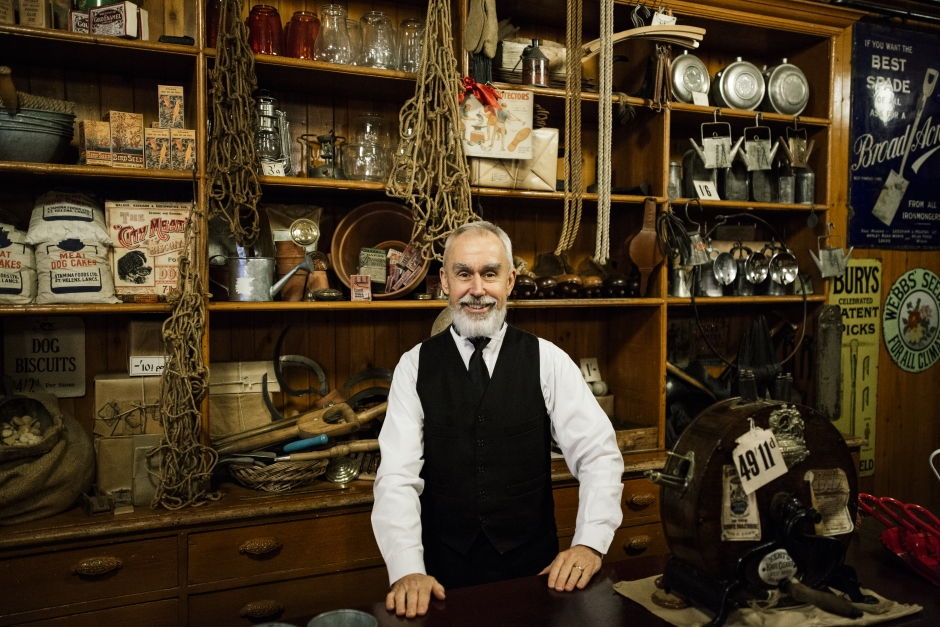Jumping aboard a passing bus, I was whisked off to see the big man himself. His grotto was housed in the old engine sheds known as Pockerley Wagonway, part of the 1820s landscape at the southeast corner of the site that also includes a church and Georgian farmhouse and gardens. I arrived in time to see a classic scene: an ancient steam wagon and precursor to the railway age, “Puffing Billy”, heaving its way up from Beamish’s painstakingly recreated Pit Village down the hill. Snow lay on the ground and men in smocks and hats huddled around glowing braziers; among trees a herd of Santa’s reindeer looked decidedly more comfortable with the temperature.
Inside, Father Christmas was a flashback to the Victorian version, sitting beside a fire and a sparkling spruce tree in his blue suit with fur edging. But he still had a tell-tale grin under that vast beard. “And what would you like for Christmas?” He asked.
“A decent pint wouldn’t go amiss.” I confessed.
“Aha! Well you’re in luck! The Sun Inn is just back there in the 1900s town and it serves the best beer in county.”

And so it is that after swinging by the Georgian farm to see its cooking demonstration, the humble houses of the Pit Village and the home fires of Seb’s 1940s house, I’m ending my trip here – in a turn-of-the-century Bishop Auckland pub rebuilt on Beamish’s street in 1985. Santa’s recommendation proves great; this is a snapshot of Christmas close to my heart.
Outside I can hear the carollers belting out hymns in the soft-falling snow; in here the Yuletide logs are crackling in the grate, the panelled walls are ringing with laughter and the beer is fresh and delicious. In fact, all the ales here are brewed only a few hundred yards away in a microbrewery housed in Best Western Beamish Hall Hotel, right next to the museum site.
I try glasses of the Bobby Dazzler and the Bell Tower while flicking through my camera, looking at my photographs from the day. Each frames a story not just of this museum and the astounding moments in time it preserves but of this most beloved of seasons. They reveal how and why the Christmas we hold dear came to exist. Perhaps most importantly though, they show that despite changing tastes and traditions, through good times and bad, the fundaments of Christmas have actually remained the same. I think of something Seb said to me about the war: “People just wanted to come together and celebrate the season as they always had with friends and family. That was the greatest present.”
More Things To Do In Durham
If you're looking for more inspiration for a short city break, take a look at our guide of what to do in Durham where you'll find details of more things to do, great shopping, eating and drinking, culture and nightlife, plus details of all Best Western Durham hotels.
CREATE YOUR OWN STORY
Beamish Hall Hotel, BW Premier Collection – Beamish, County Durham, DH9 0YB – +44 (0) 844 387 6310 – bestwestern.co.uk
Breath-taking period features in a country house hotel dating back to the thirteenth-century with Georgian exterior, 24-acre gardens, pub, restaurant and microbrewery.
Beamish open-air museum – +44 (0) 191 370 4000 – beamish.org.uk